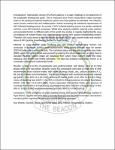| dc.description.abstract | Introduction: Malnutrition among HIV/AIDS patients is a major challenge to the attainment of the sustainable development goals. This is important since severe malnutrition creates increased strain on the already overstained healthcare system once these patients are admitted. HIV infection causes excess nutrient loss and malabsorption, further increasing the nutritional requirements of HIV-infected lactating women. As a result, A HIV-infected lactating woman is a greater nutritional risk than a non-HIV-infected counterpart. While other students establish maternal under nutrition and associated factors in different parts of the world, few studies in Uganda highlighted the issue on predictors of nutrient intake and nutritional status among HIV positive breastfeeding women. Therefore, this study aimed at determining the associated factors with nutrient intake and nutrition status of HIV positive breastfeeding mothers in Apac district.
Method: A cross-sectional study involving 224 HIV positive breastfeeding mothers was conducted. A pre-tested 24-hour recall questionnaire, using dietary diversity score for women (DDS-W) was used to collect the data. The nutritional status was assessed using body mass index (BMI), while the nutrient intake was assessed by entering the actual intakes into an excel sheet to calculate the total nutrient intake per individual from which mean nutrient intake and mean adequacy ratio (MAR) was finally calculated. The data was analyzed using Stata version 14 at univariate, bivariate and multivariate levels.
Results: A total of 10.3% of participants were undernourished, with dietary score of 4.3 food groups while 21% had dietary diversity score. The participants were able to meet 61% of their recommended micro nutrition intake, with intake of energy, lipids, zinc, calcium, vitamins A, C, B6, and B12 below recommendations. The factors associated with nutritional status were material age [AOR =1.94, 95% CI (1.05-3.59)], presence of market [AOR =0.42, 95% CI (0.223-0.784)], means of obtaining food (AOR= 0.55, 95% CI (0.234-0.94)) and presence of cultural food taboos [AOR= 0.44, 95% CI (0.136-0.998)]. Factors associated with nutrient intake were presence of market [p=0.018, 95% ci (0.010-0104)], income [p=0.010, 95% CI (0.007-0.048)], DDS [p< 0.001, 95% CI (0.022-0.058)] and household head [p=0.049, 95% CI (-0.095-0.001)].
Conclusion: There prevalence of under nutrition among HIV positive Breastfeeding mothers in Apac district, coupled with poor dietary diversity score and low micronutrient intake. Interventions increasing DDS, nutrition education and income should be promoted.
Key Words: Nutrient, Intake, Nutritional status, HIV, Positive, Breastfeeding, mothers | en_US |

